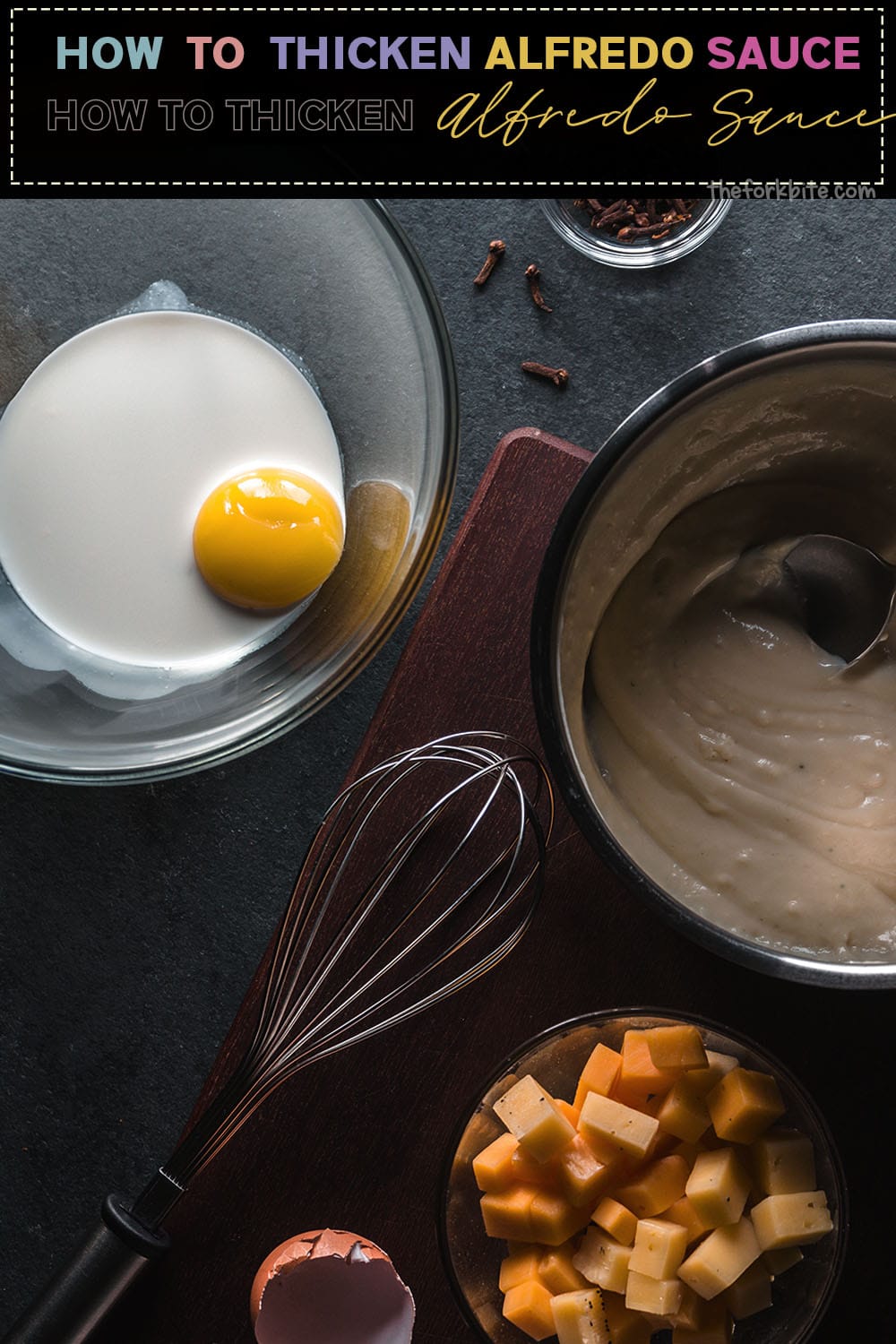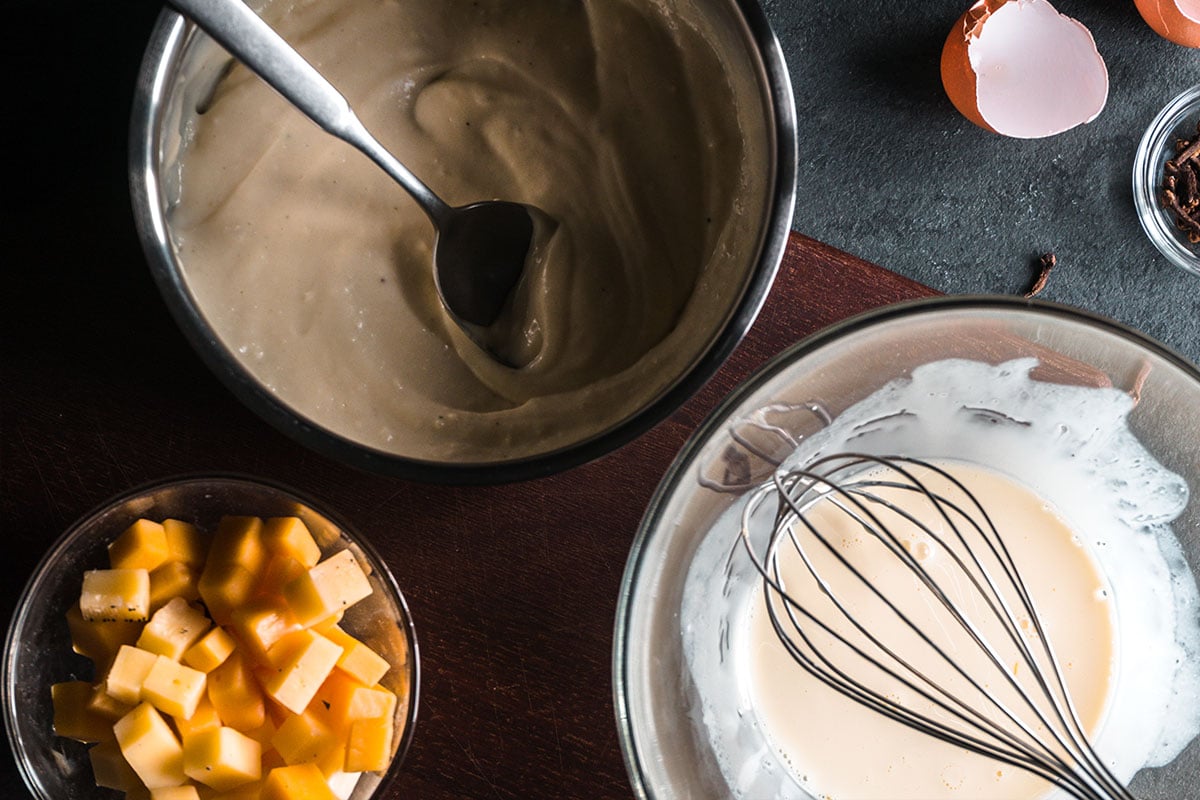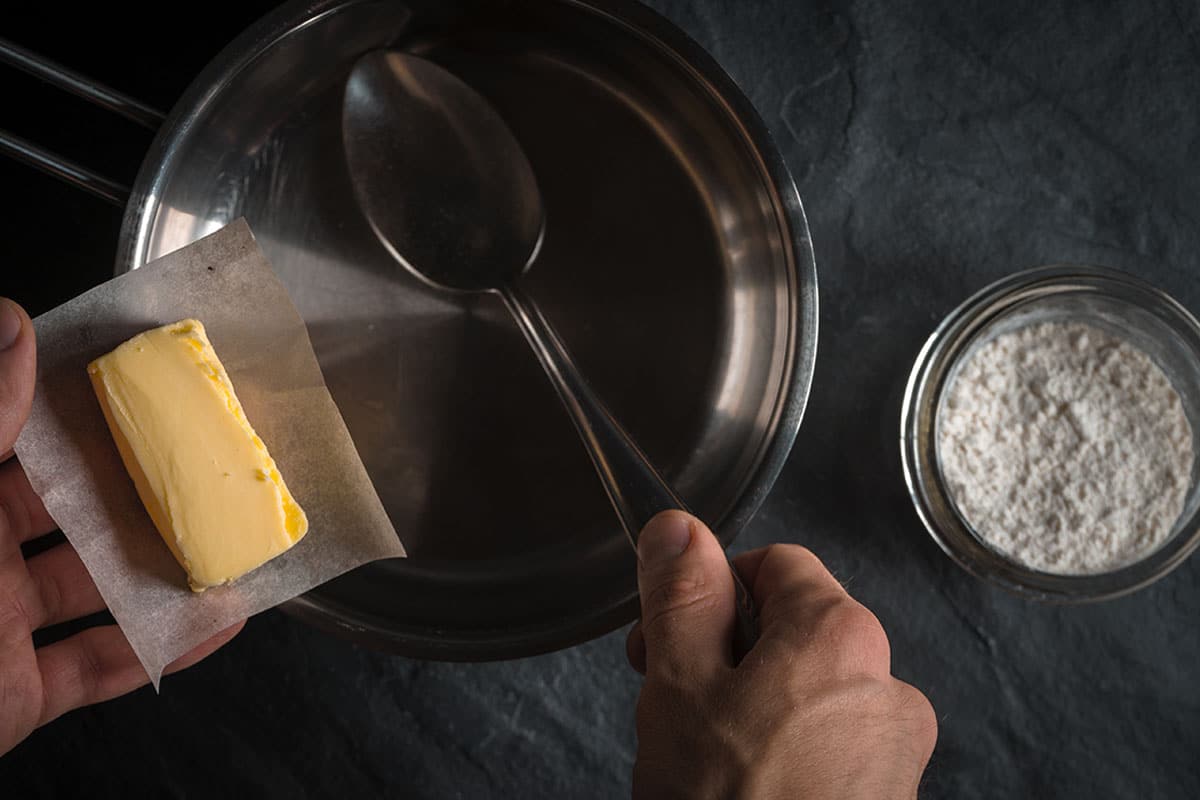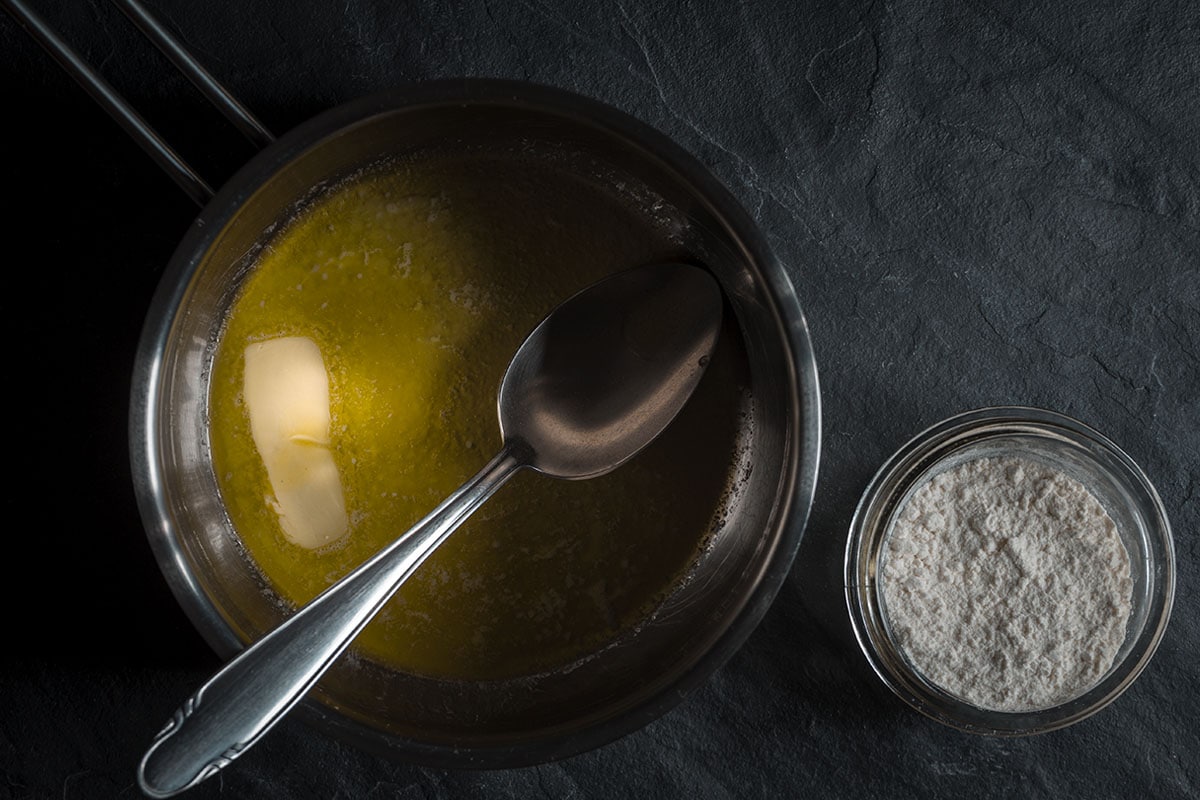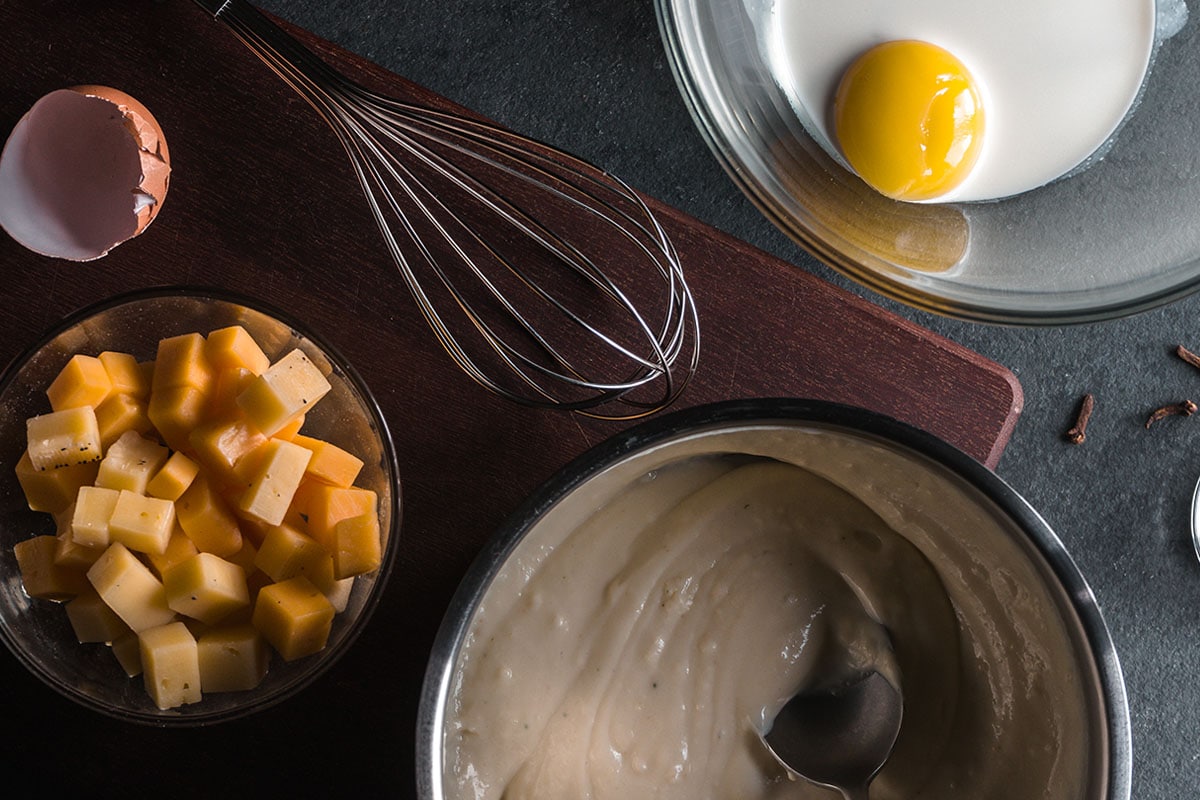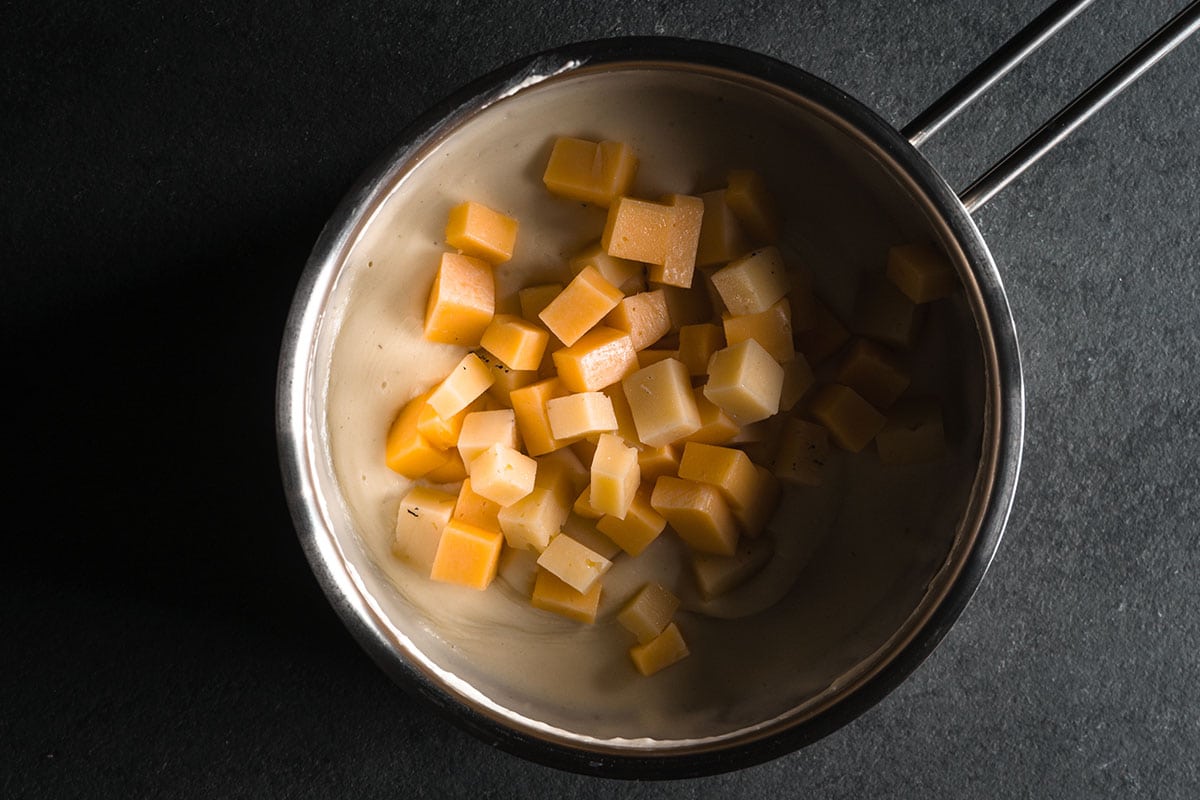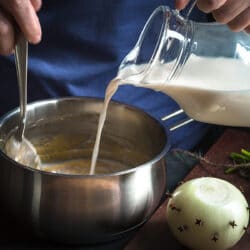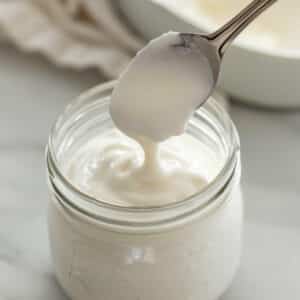How to thicken Alfredo sauce? Learn the 5 ways to thicken your Alfredo sauce, number two and three are some of my favorites. Not all pasta sauces have been created equal. Some stand head and shoulders above others, and Alfredo sauce are one of them. It is a culinary delight that will elevate any pasta dish to the highest levels, and making it couldn't be easier.
Alfredo sauce is an Italian classic. One of the most famous dishes used to create is Fettuccini Alfredo, but it works well with all Italian staple forms, including Rigatoni and Spaghetti.
A classic Alfredo sauce is made with butter, cream, and Parmesan, but you can use cream cheese to thicken it and add various herbs and seasonings to create your own version of this tasty sauce. You only have to cook and serve it once, and I guarantee it will instantly become a firm family favorite.
Jump to:
The origin
Alfredo sauce is the original creation of Alfredo di Lelio. The story of its invention has two versions. The first is that he created it in 1908 and gave it to his weakened wife following the birth of their first son, and before serving it, he prayed to St Anna, the patron saint of pregnant women.
The second version is that he created it for his wife while pregnant with their second son and was too nauseous to keep down other foods.
Whichever version you prefer, the dish originates with Alfredo di Lelio, and shortly having come up with its creation, he began serving it in his restaurant on the Via Della Scrofa in Rome.
Two of his diners were Hollywood stars Douglas Fairbanks and Mary Pickford, who sampled Fettuccini Alfredo's dish in his restaurant while on honeymoon. They adored it and sent di Lelio a fork and spoon made of gold out of gratitude. They took the recipe back to the states with them, and the rest is history.
Ingredients of a basic Alfredo sauce
It is said that the best things in life are simple, a sentiment that is ideally suited to this elegant Italian sauce. It has a delightful velvety texture that feels as if it's melting in your mouth. It's all about the ingredients, and you need the best freshest produce to make the best Alfredo Sauce.
The perfect finishing touch is a sprinkling of Parmesan cheese that has to be grated from a fresh block to create that silky finish.
Here's what you will need:
- Some butter - you can use salted or unsalted depending on your preference
- Whipping cream - the heavier, the better to create that rich, velvety sauce.
- Cream cheese - a "must-have" to get that gorgeous, thick sauce
- Finely chopped garlic - used fresh garlic for this for best taste.
- Powdered garlic - sprinkled in to enrich that lovely garlicky taste.
- Italian seasoning - for an instantly recognized Italian flavor
- Salt and pepper to taste.
- Grated Parmesan - it has to be fresh for that silky smoothness. If you use a powdered version, you run the risk of ending up with a grainy texture.
- A pinch of nutmeg.
That's all there is to it, although later on, I'll give you some other suggestions for some variants of Alfredo sauce.
5 Tips on thickening your Alfredo sauce
It's vitally important that creamy sauces the likes of Alfredo, Bearnaise, and Hollandaise have a gorgeous, thick richness. Without it, these types of sauces just don't deliver in the way they should.
So, how to make Alfredo sauce thicker?
The key to thickening any sauce is through reduction. This is achieved by allowing the sauce to simmer until the majority of the moisture is steamed out.
If you still don't feel it is thick enough after reducing, you can add a thickening agent. But don't forget that when you add the Parmesan, this too will act as a thickener.
1 Using flour as a thickening agent
Flour is probably the most common thickening agent, and if you go down this route, I recommend using all-purpose flour as it is milled for longer to produce finer particles.
It is absorbed quickly, and if you stir the sauce as you add the flour, it will minimize any lumps forming.
If you use regular all-purpose flour, it will develop more lumps, but it will disappear if you whisk the sauce properly.
How to do it
Use 2 Tbsp. flour mixed with ¼ cup cold water for each cup of medium-thick sauce.
- Mix water and flour and mix them thoroughly to prevent lumps.
- Stir the combined mixture into the sauce. Cook and stir over low heat until thickened and bubbly.
- Don't forget to simmer the sauce for a minute to get rid of any taste of raw flour. Keep an eye on it not to end up with a burnt sauce.
2 Making a beurre manié
Beurre Manié is French for "kneaded butter." You make it by adding equal parts of cold butter and flour. It's essential to use real butter as margarine doesn't work anywhere near as well.
Here's how to do it:
Start with 1 tablespoon of all-purpose flour and 1 tablespoon of softened butter. It's best to just leave the butter out for an hour or so before you begin. Don't microwave the butter.
- Put the ingredients into a bowl and knead until they come together to form a doughlike consistency.
- Take a level tablespoon of the kneaded mixture, and in between the palms of your hands, roll it into a small ball.
- Drop the ball of Beurre Manié into the simmering liquid carefully to avoid any splashing, and proceed to stir the sauce until it is completely dissolved and distributed.
- As soon as it reaches your preferred consistency, take the pan off the stovetop; otherwise, it can develop a starchy flavor.
3 Using a flavored roux
Using a roux is the preferred method for thickening creamy sauces used by most cooks in the USA. A roux is made by combining butter with flour.
You can also use something like rendered bacon fat to impart a little flavor to your roux. Most cooks, however, prefer to use butter. You can check the recipe here on how to make a simple roux.
Here's how to make your roux:
- Warm a pan on the stovetop on a low heat setting, add the butter and add a similar amount of flour when hot.
- Mix the ingredients and cook the roux gently for between five and 15 minutes stirring all the while. It will become white or golden. Try not to let it turn brown, and if it does, reduce the heat immediately.
- Every time you put a tablespoon of the roux into your simmering sauce, you need to stir it gently to make sure that any lumps disappear.
- When it reaches your targeted consistency, allow it to simmer for a few more minutes to dispel any taste of raw flour.
4 Using cornstarch as a thickening agent
Mix equal quantities (1:1 ratio) of cold milk or water and cornstarch in a separate bowl.
Using cornstarch as a thickening agent, you will find that it adds a slight shine to the source. It has a nice, mild taste and will not detract from the sauce's flavor itself.
However, you cannot add it directly into the sauce as it will result in lumps forming.
- The way to avoid this is by mixing equal quantities of cold milk or water and cornstarch in a separate bowl. As you mix it, it will thicken.
- Add the thickened mixture into the simmering sauce and stir gently.
The only thing you should be aware of is that it will begin to thin by over-stirring a sauce thickened with cornstarch.
Also, any sauce thickened in this way needs to be served immediately because it will become gelatinous if allowed to cool.
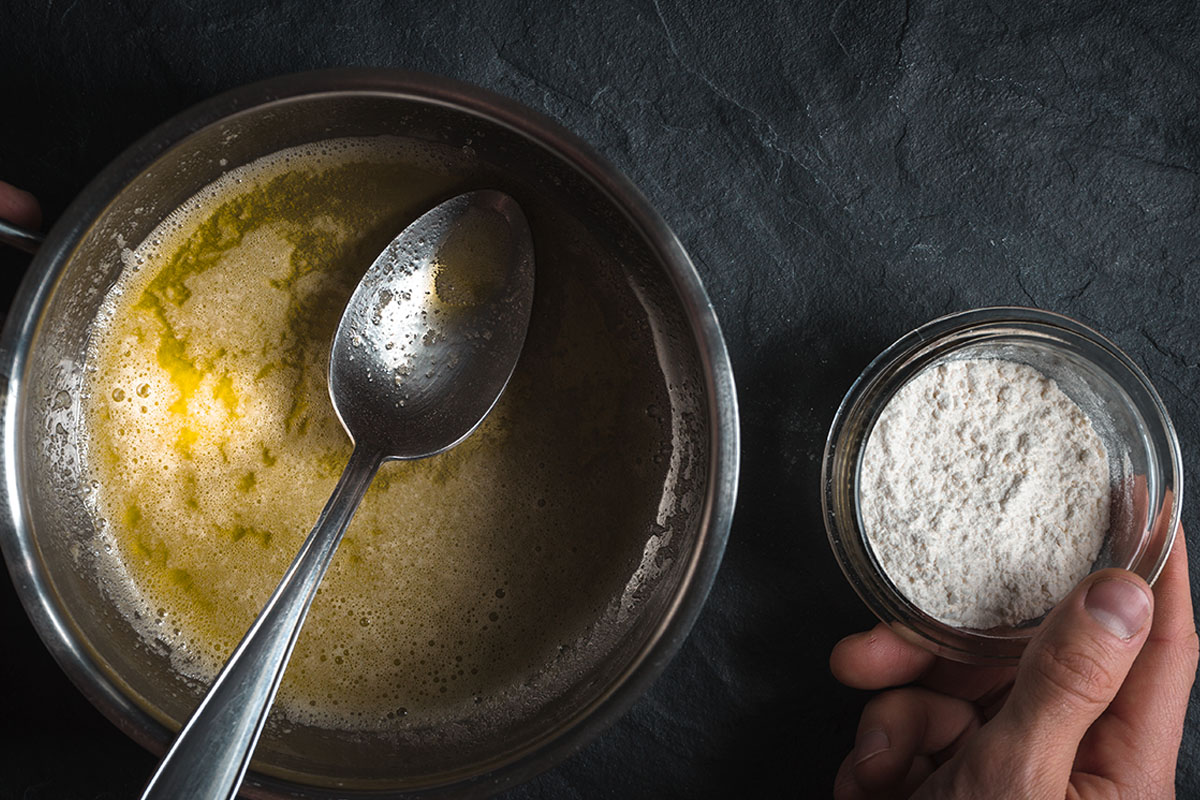
5 When to use egg as a thickening agent
You can use egg yolk as a thickening agent for sauces that already have eggs in them. An example would be hollandaise sauce.
Egg yolks will curdle if you drop them straight into a hot sauce, so you need to warm them gently and separately - a process known as tempering.
These are the steps to follow:
- Add a drizzle of cream or milk to your egg yolk as this will help protect it from the heat.
- Add some of the sauce into the yolk mixture a tablespoon at a time.
- Keep on until you have about a quarter or a third of a cupful.
- Pour the mixture back into the remainder of the sauce and simmer gently.
- Remember to keep the temperature setting low because even a tempered yolks might curdle.
How to thicken Alfredo sauce from a jar
Store-bought Alfredo sauce is okay, but you can improve its flavor to be more like a home-made sauce. A little fresh cheese works wonders.
- Pour the sauce from the jar into a pan, add as much cheese as you like to reach the taste you're happy with.
- Then warm the sauce gently over low heat to allow the cheese to dissolve into the sauce mixture.
- It may tend to stick to the pan's bottom if it gets too hot, so make sure to heat it gently.
You can vary your Alfredo sauce a little by adding any of the following ingredients:
- 1 tablespoon of crushed red pepper
- Half a tablespoon of cajun seasoning
- Some juliennes of sun-dried tomato
The amounts shown above are suggestions only. After a bit of trial and error, you will arrive at your own favorites and quantities.
You may also add some ideas of your own like finely chopped shallot or mushroom, for example,
How to make store-bought Alfredo sauce better
Whenever possible, I always make my pasta sauces using fresh ingredients.
However, just to be on the safe side. I usually have a jar of store-bought Alfredo sauce tucked away in my larder for when my hubby can't wait a moment longer for a delicious serving of one of his favorite dishes - Chicken Alfredo Pasta.
Of course, if I have no alternative other than using a store-bought jar, I have a few little tricks up my sleeve to make it taste more like home-made.
You'll spot a couple of little flourishes in the method shown below.
Instructions and ingredients:
Step 1
With your pasta boiling away, pour the jar of sauce into a saucepan and warm on the stovetop.
Step 2
Add some little extras to the store-bought sauce to give it that all-important home-made taste.
Here's what I add:
- Four or five crumbled-up crispy rashers of bacon
- 1 tablespoon of real butter (salted or unsalted)
- One-third of a cup of heavy cream
- 2 Tbsps of finely chopped garlic -be sure to use the fresh variety
- One-quarter of a cup of finely grated fresh Parmesan cheese
- Half a cup of fresh steamed broccoli.
- A dash of garlic salt
- A dash of fresh ground black pepper
- A pinch of dried or fresh if it's available, basil
Step 3
Towards the end of the cooking time, add the pre-cooked chicken, mixed seafood, or shrimp into the sauce.
Step 4
Drain the pasta, pour over the delicious Alfredo sauce with your preferred protein, and finish off with a few sprigs of parsley or basil.
Step 5
Serve with a fresh, vibrant green salad and a chunk of hot, garlic bread. Yum!
How long does it last in the fridge?
Bearing in mind that Alfredo sauce has cream in it, if it is store-bought and the jar is unopened, you can keep it in your larder for between six and eight months.
But once the jar has been opened, you should be able to keep it for up to one week in your refrigerator.
The same goes for if it has been mixed with cooked pasta. However, I wouldn't recommend keeping it for more than 4 to 5 days.
If you've got some Alfredo sauce in your fridge and you are a little wary about its freshness, don't take any chances; throw it away.
If you got the ingredients to hand, it only takes a few minutes to make from scratch.
In a worst-case scenario, you can always pop out to your local store and buy another jar.
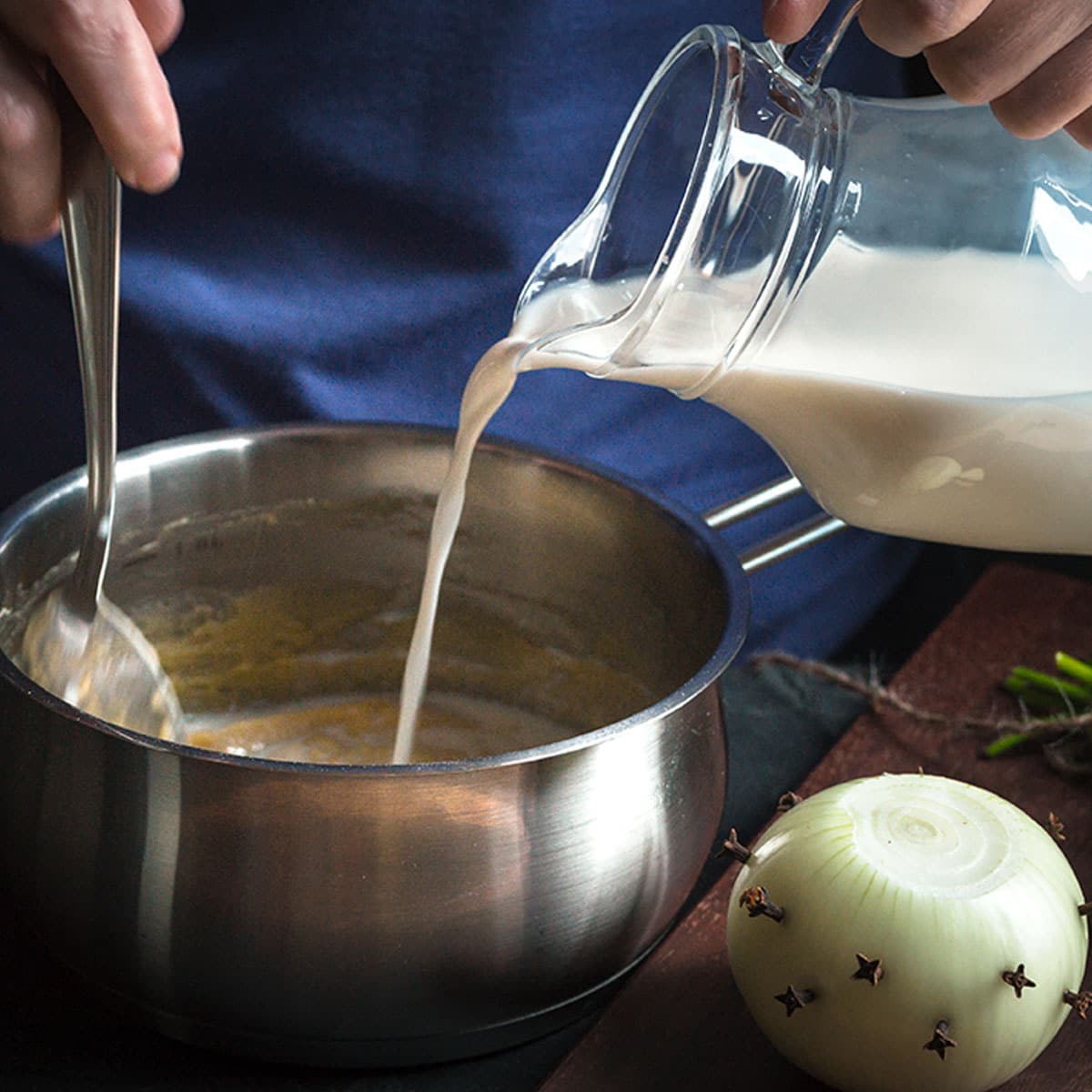
Shelf life and how can I tell if it has gone off
As mentioned earlier, if you have an unopened jar of store-bought Alfredo sauce in your pantry, you will be able to keep it safely for 6 to 8 months.
If it does go off, it's not difficult to tell. The first port of call is your nose.
When it has gone bad, it will omit a sour and tangy odor. You'll be able to tell it immediately from fresh Alfredo sauce.
The other thing is that once Alfredo sauce has turned, you'll be able to tell by looking at it. It goes a distinctly strange-looking color.
Besides, Alfredo sauce that has gone bad often develops mold. If you spot any signs - it's time to bin it.
The last resort, if none of the above signs are there, but you are still slightly suspicious, is that you can try a little taste. Just a tiny amount is not going to make you ill even if it has gone off, and if it has, your taste buds will warn you.
Just remember that once a jar of pasta sauce has been opened, you should use it within 5 to 10 days maximum.
It is recommended to eat fettuccine Alfredo as soon as it's been made. The home-made variety has many health benefits, and who can resist it anyway once you smell a freshly cooked batch?
How to make fettuccine Alfredo in advance for the freezer
As you've already seen from the recipes described above, a chicken Alfredo fettuccine takes little time to prepare, is quick to make, and delicious to eat.
If you have any leftovers, or you want to make it in advance and store for future use, as and when - you can freeze it.
Okay, it's a little more costly in terms of freezer bags and boxes, freezing and reheating time, but on the other hand, it's a very convenient way of having a tasty pasta dish on tap whenever you need it.
If you will be putting your chicken Alfredo fettuccine into the freezer, it's worth making a larger batch - like two or three times what you would ordinarily make for a single meal.
Follow these steps for freezing:
- Having cooked the pasta to your liking (I like mine al dente), and the sauce is warmed through, mix the ingredients, tip into a colander, and suspend above a bowl of iced water.
- Once thoroughly cooled, transfer the batch into as many heavy-duty freezer bags or boxes as needed.
- Seal the bags or containers, label and date them, and tuck them safely away in your freezer.
As per the US Department of Agriculture, the guidelines for safe freezing are that you should continuously store frozen foods such as Chicken Alfredo Fettucine at or below 0°F.
To enjoy reheated pre-frozen Chicken Fettuccine Alfredo at its best, east within three to six months.
Don't forget that this recipe contains dairy products. It means that if you are going to store it in your fridge for a few days or keep it in your freezer for longer-term storage, you mustn't leave it sitting at room temperature for more than two hours.
Preventing frozen pasta from becoming mushy and sauces from separating
People sometimes complain that when they freeze pasta, it becomes mushy when reheated. Another often voiced concern is that frozen, creamy Fettucine sauce often separates.
The problem is that freezing cooked pasta can indeed soften it.
- Knowing this, you can take countermeasures by slightly undercooking it when you boil it before freezing.
- Another good tip is to keep the pasta and sauce in separate bags or boxes when freezing.
Following both of these tips will ensure you have perfect al dente pasta - if that is the way you like it - when you reheat it.
You could just freeze the sauce and make fresh pasta when needed, but if it means throwing away pasta leftovers, and that is a bit of a waste. The choice is yours.
As far as the sauce separation issue is concerned, instead of using milk in your recipe, which is more prone to curdle or separate when reheated from frozen, use cream instead.
Extra tips
- If you are making Fettuccine Alfredo for freezing, don't include any cream cheese in your ingredients. It tends to become watery when frozen.
- Make sure to add plenty of salt and pepper to the chicken (not too much salt, though), as this helps to keep it fresh tasting.
- Leave out the garlic. It turns bitter when frozen, so add it when you reheat the dish.
Food safety tips
- Always use the freshest ingredients.
- Do not thaw your frozen chicken fettuccine Alfredo on the kitchen work-surface. It can promote bacterial growth.
- Always thaw overnight in your refrigerator.
The US Department of Agriculture suggests you should set the temperature inside refrigerators to 40°F or less. Also, when reheating, make sure that the internal temperature of the dish reaches 165°F.
What causes Alfredo sauce to separate?
If your sauce develops a thin film that looks like olive oil near its surface, the butter has separated.
If this is a problem you keep encountering, it can be caused by one of two things:
#1. High Temperature
- Firstly, it can happen if you heat the sauce at too high a temperature. It causes the milk to scorch, making it separate. You can get around this by ensuring that your sauce never boils. Maintain the pan on a low-to-medium temperature setting while keeping the sauce moving with a handheld whisk or wooden spoon to prevent scorching.
#2. Heavy cream is too cold
The second reason your sauce might separate is if the heavy cream you used was too cold when you added it to the sauce. The best way around this is to gently heat the cream separately while you are making the roux.
If you bought your cream in a carton, to save dirtying a pan, you could warm the cream in its container by placing it in a slightly warm oven for a few seconds.
Alternatively, you can pop it into your microwave on a defrost setting and warm it gently for a few seconds.
Another trick is to add a few drops of hot pasta water into the cream and stir to distribute the warmth.
Butter and cheese don't mix well.
The problem I have discovered is that butter and cheese are not good melting bedmates. They each melt at different temperatures, and this is another reason for Alfredo sauce separating.
How to get around this?
I have taken to storing any leftovers separately in a jar. Then, when I come to reheat them, I give them a steady whisk over a gentle heat until the cheese and butter melt together.
As I've said on a couple of occasions before, don't allow your Alfredo sauce to come to a boil. Heat it gently and lightly whisk while doing so.
Which cheese is best for Alfredo sauce?
Alfredo di Lelio's original recipe calls for Parmesan cheese. It is the best, but don't skimp by buying a cheap brand.
Get the best - Parmigiano-Reggiano - the difference is very worthwhile.
Some other Italian cheeses work well with an Alfredo sauce
Fontina:
Fontina cheese is a vibrant and creamy cheese from the Aosta valley at the Italian Alps' feet. It makes an Afrdo sauce that is fit for the gods.
Romano:
Romano cheese is a wonderful Italian cheese that works beautifully in an Alfredo sauce recipe. It can be made with milk from cows, goats, or ewes, or a combination of any two. If you can find it, the best is Pecorino-Romano.
Asiago
Asiago cheese is made from cow's milk and is only produced on the Asiago Plateau, from which it takes its name. Its texture varies with its age. Asiago Pressato, or fresh Asiago, has a smooth texture, whereas Asiago d'allevo, or aged Asiago, has a more crumbly texture.
You can't beat di Lelio's original recipe, but these other cheese variants will give you a good run for your money.
How does Alfredo sauce differ from Bechamel sauce?
Both of these sauces are made with dairy-based products.
However, Alfredo sauce hails from Italy, while Bechamel comes from France.
Whereas Bechamel, also known as white sauce, is made with butter and flour roux with milk, Alfredo is made with heavy cream, which you reduce on a stovetop, then adding Parmesan.
Sauces like these can easily stick to the pan's bottom and sides, so it is best to stir them as they warm through continually.
How to stop cream sauces from curdling
Curdling is what occurs when milk's proteins stick together. It is caused when fatty emulsions, proteins, and water interact when boiled together over high heat.
You can prevent your Alfredo sauce curdling by using heavy cream instead of milk.
Dishes you can use your Alfredo sauce
Initially, Alfredo sauce was created to accompany fettuccine. It can, however, be used as a base for other dishes, including:
- Chicken fettuccine Alfredo with Zucchini ribbons
- Chicken fettuccine Alfredo with Broccoli florets
- Cajun Chicken Alfredo
- Thai Style Fettuccine Alfredo
- Mixed Seafood Fettuccine Alfredo
- Shrimp Fettuccine Alfredo
- Gorgeous Scalloped Potatoes
Great for Keto dieting
If you are on a Keto diet, you will be relieved to know that Alfredo sauce is okay to eat.
Keto dieting is all about getting your body to consume fat instead of carbs, so the rich creaminess of this sauce allows you to enjoy a sumptuous, rich meal.
Alfredo Sauce as an ingredient of the main meal
Although you can use store-bought Alfredo sauce as an ingredient for main meals, the home-made direct variety is superior in both taste and creamy texture. Once you use it, a store-bought source will be a thing of the past.
Not only is home-made Alfredo sauce delicious with any type of pasta, but it can also be used as a dip or even as a topping on pizza.
Let me summarise a few options for you.
With pasta
I prefer to use thicker types of pasta, like tagliatelle and fettuccine, for example, as they soak up more of that delicious, velvety sauce.
On pizza
This is one of my all-time favorites. Less sharp than a tomato dressing, Alfredo sauce brings a lovely delicate flavor to any pizza.
As dip
Alfredo sauce makes a great dip and works particularly well with Grissini - those lovely thin Italian breadsticks.
For pasta bake
A pasta bake is best made with penne pasta, Alfredo sauce, and any protein you care to add. For me, chicken or spicy Italian sausage works superbly well.
Storing Alfredo sauce
Having got the knack for making a delicious, silky-rich Alfredo sauce, there are times when you will want to store it for one reason or another.
So let's finish up by going over the best ways of storing Alfredo sauce and maintaining its wonderful flavor and texture when it is reheated.
Keeping in your fridge
I have found that the best way of storing Alfredo sauce in my fridge is to transfer it into a jar and seal it before refrigerating.
Stored like this, it will last for up to 5 days and will still have the right texture, and will taste delicious when reheated.
On freezing
Although it is possible to freeze your Alfredo sauce if you follow the steps I outlined above, for the best flavor and texture, it is recommended to eat it immediately after cooking.
On reheating
Don't rush it. If you allow it to boil, it can easily scorch, separate, and stick to the pan. Heat it slowly and gently, stirring all the time. It is possible to microwave, but if you overheat it, it will separate.
Once Alfredo sauce has been reheated, it should be eaten or thrown away.
There you have it. Everything you need to know about making, storing, reheating, and most importantly, eating the best creamy, delicious Alfredo sauce know to humankind.
Other interesting posts:
- How Long is Cooked Pasta Good For
- How to Reheat Lasagna Without Drying it Out
- How Long it Cooked Spaghetti Good in the Fridge
- How to Thicken Spaghetti Sauce
Thicken Alfredo Sauce (How To)
Pin RecipeIngredients:
- Alfredo sauce
Instructions:
Using flour as a thickening agent:
- Gradually, add ½ to 1 tablespoon of flour (depends on the amount of your sauce). Stir the sauce as you add the flour, it will minimize any lumps forming.If you use regular all-purpose flour, it will develop more lumps, but it will disappear if you whisk the sauce properly.
- Don’t forget to simmer the sauce for a few minutes to get rid of any taste of raw flour.
Making a Beurre Manié or Kneaded Butter:
- Start with 1 tablespoon of all-purpose flour and 1 tablespoon of softened butter. Note: Leave the butter to soften at room temperature. Don't microwave the butter.
- Put the ingredients into a bowl and knead until they come together to form a doughlike consistency.
- Take a level tablespoon of the kneaded mixture, and in between the palms of your hands, roll it into a small ball.
- Drop the ball of Beurre Manié into the simmering liquid carefully to avoid any splashing, and proceed to stir the sauce until it is completely dissolved and distributed.
- As soon as it reaches your preferred consistency, take the pan off the stovetop; otherwise, it can develop a starchy flavor.
Using Flavored Roux:
- Warm a pan on the stovetop on a low heat setting, add the butter or oil and add a similar amount of flour when hot. You can check the recipe here on how to make a simple roux.
- Mix the ingredients and cook the roux gently for between five and 15 minutes stirring all the while. It will become white or golden. Try not to let it turn brown, and if it does, reduce the heat immediately.
- Every time you put a tablespoon of the roux into your simmering sauce, you need to stir it gently to make sure that any lumps disappear.
- When it reaches your targeted consistency, allow it to simmer for a few minutes to dispel any taste of raw flour.
Using cornstarch as a thickening agent:
- Mix equal quantities (1:1 ratio) of cold milk or water and cornstarch in a separate bowl. As you mix it, it will thicken.
- Add the thickened mixture into the simmering sauce and stir gently.
- Keep stirring until the sauce thickens. Turn the heat off and serve immediately.
When to use egg as a thickening agent:
- Egg yolks will curdle if you drop them straight into a hot sauce, so you need to warm them gently and separately – a process known as tempering.
- Add a drizzle of cream or milk to your egg yolk as this will help protect it from the heat. Add some of the sauce into the yolk mixture a tablespoon at a time.
- Keep on until you have about a quarter or a third of a cupful. Pour the mixture back into the remainder of the sauce and simmer gently.
- Remember to keep the temperature setting low because even a tempered yolks might curdle.
Notes:
What causes alfredo sauce to separate?
If your sauce develops a thin film that looks like olive oil near its surface, the butter has separated. If this is a problem you keep encountering, it can be caused by one of two things: #1. High Temperature- Firstly, it can happen if you heat the sauce at too high a temperature. It causes the milk to scorch, making it separate. You can get around this by ensuring that your sauce never boils. Maintain the pan on a low-to-medium temperature setting while keeping the sauce moving with a handheld whisk or wooden spoon to prevent scorching.
Please note that all nutrition information are just estimates. Values will vary among brands, so we encourage you to calculate these on your own for most accurate results.

